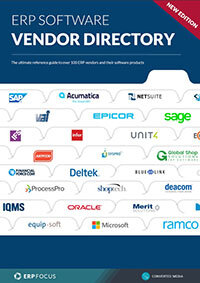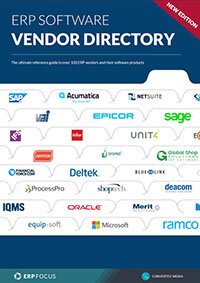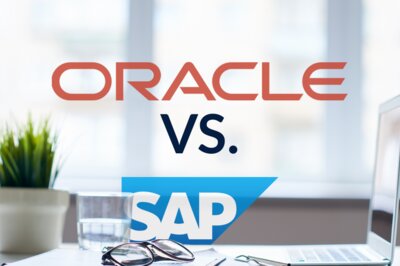Open source ERP: a complete buyers' guide
If you are in the market for an ERP system, you are probably already feverishly comparing vendors by price, features, benefits, and SLAs. But have you ever considered open source ERP software?
For the right organization, open source ERP offers a range of possibilities, including reduced costs and greater flexibility with regard to customization. This guide gets you started on the basics, including:
- What open source ERP is, and who should consider it
- The difference between open source ERP and proprietary ERP
- Costs associated with open source ERP and what to forecast
- Some open source ERP systems to kick off your selection shortlist
What is open source ERP and who should consider it?
Open source software can give a cost-saving if it is right for your business. Rather than being vendor supported, the code is made available publicly and its development is managed by a community rather than one business. This can mean financial savings on licensing fees and support costs but done badly, it can prove a false economy. Below, we examine the pros and cons of open source ERP to help you decide if it is right for your organization.
Open source ERP vs proprietary ERP
Let’s first look at the benefits and potential pitfalls of open source ERP.
Pros:
No installation or licensing fees
This is the primary reason most buyers will consider open source software — installation and licensing come at a cost when you buy a proprietary ERP system. There will also be usage agreements that might restrict the number of users you can give access to and even which other tools you can use and integrate with. Freedom to scale and modify as you see fit, without the extra fees or committing to a long-term contract can pave the way to faster and more flexible ERP solutions.
Compare open source ERP systems with proprietary ERP with this interactive ERP comparison tool
Interconnectivity
If you require integration with existing standalone business applications then an open source ERP might be more compatible than a proprietary system. If an out of the box solution will require customization in order to work with your existing hardware or software infrastructure anyway, then an open source ERP product might be more cost-effective than its counterpart.
Community support
If you love being immersed in a cutting-edge tech environment, then open source ERP software might be a good fit. If you choose one of the many platforms that have a large and engaged community behind it, then the support you receive can easily rival that of a single vendor.
Tech kudos
Businesses that operate in a high-tech marketplace might enjoy the positive reputation that using open-source technology brings. If your business sells tech solutions, or if you sell to technology-focused clients, having open-source software can be an advantage. Showing your business to have the moral, intellectual and technological confidence to implement an open source system can make you more appealing to a big chunk of the tech community.
Cons:
Inadequate support
Availability and accessibility of support are some of the biggest selling points of licensed software products. In the event of an incident, vendors will usually have a 24/7 support SLA and be on-hand via the telephone if you need them. With an open source ERP system, you might be waiting for a reply via a forum for some time, especially if it is not supported by a large community or is not popular in your timezone.
Security risks
One of the most off-putting factors around open source ERP software is the fact that the code is public. This can pose a security risk as hackers can lay their hands on it just as easily as anyone else.
Installation and Usability Issues
Not only do you need a team that can install and maintain the system in-house, but you need to provide all of the end user support and training in-house too. Proprietary systems undergo rigorous R&D and user testing while open source varieties may not have been put through the same level of scrutiny before it was unleashed on the world.
How much does open source ERP cost?
While you can find a free open source ERP system, there are other costs that you need to be ready for. Some will be hard costs and some will be labor costs or potential risks -each varies according to the skills you have in-house, the software itself and the strength of the community supporting it:
- Installation
- Training
- User support
- Ongoing maintenance
- Customization
- Data transfer
- Security measures
- Downtime risk
- Hosting
Before deciding on which open source ERP to go with, run through the requirements and associated budgets to ascertain whether this is the best investment for your organization. Consider whether you will see an appropriate ROI in a reasonable timeframe and compare this with comparable proprietary systems.
Use our extended guide to ERP budgets to forecast key selection and implementation costs
Which open source ERP solutions should I consider?
Below, we have hand-picked some of the most popular open source ERP solutions to give you an insight into what is available.
OpenBravo ERP
OpenBravo is available in 3 versions; Enterprise, Professional, and the free Community edition. The Enterprise version comes in at £3,119 per month and the mid-level option at $815 per user per annum (though you will get some user subscriptions thrown in) so if you can find the functionality you need in the pared-down Community code then there is a good cost-saving to be made.

Screenshot of OpenBravo ERP
There is a large repository of modules under public license available in the OpenBravo Forge, a sizeable and active community, and a wiki and blog to help support your in-house team. For training, there are paid-for courses available for both tech resources and end users -some tutor lead and some self-study based.
Odoo ERP
Odoo is a little different to most open source options in that you can choose to download the source code and maintain the software on-premise or have the cloud app for up to 50 users for free.
The Odoo system encompasses all the main features you would expect from ERP software such as accounting, PLM, inventory, and warehousing. Additional features (project management, CRM, and HR for example) can be purchased as add-ons according to your needs. With 10,000+ apps, it is a highly modular system with a great deal of flexibility.

Odoo's range of apps
Dolibarr
Dolibarr boasts a community of thousands of developers. It can be used as a CRM or more rounded ERP depending on which features you choose.
Sales, POS, manufacturing, invoicing and other modules allow you to choose the right building blocks for your organization. There is even an auto-installer option which promises you do not need technical knowledge to get up and running. Perhaps this is why Dolibarr suggests it is one of the easiest open source ERPs on the market.

Dashboard view from Dolibarr
Of course, this is just a small handful of examples, there are many others that might be a better fit for you. Take a look at inoERP, Opentaps, ERPnext, MixERP and other players to better gauge what is available. Most have online demos, large wikis and community forums and marketplaces to help you with your discovery. Just make sure you understand what you get for free and what you might have to pay for in terms of add-ons or in-house development.
Free white paper

ERP Software Vendor Directory
Put the most comprehensive ERP vendor directory on your desk today

Featured white papers
Related articles
-

Real life experiences: Oracle vs SAP
A project manager's take on Oracle and SAP' strengths and weaknesses
-

CMMC Compliance: What Aerospace and Defense Manufacturers Need to Know
Key insights on CMMC compliance, deadlines, and securing DoD contracts with CMMC 2.0 certificatio...
-

Top 10 ERP selection criteria (including checklist)
The most important ERP selection criteria you should keep in mind during your selection process.



